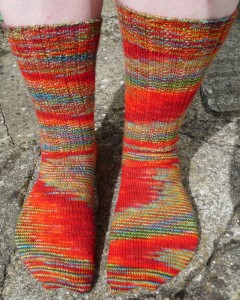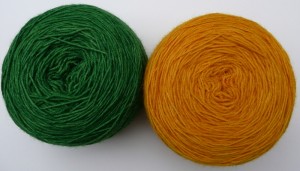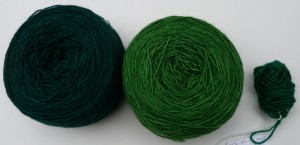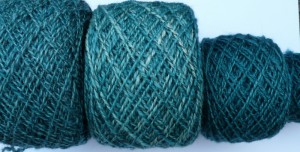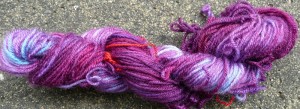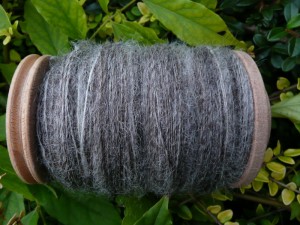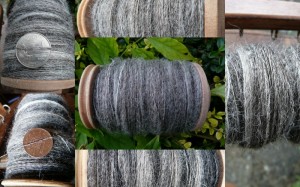The jumper has become a bit difficult to haul around, so for the last couple of weeks I have been stuck with no travel knitting. I had been resisting casting on anything new, for fear that it would slow down the jumper progress. The frustration of not having any knitting to take with me has worn me down and I have cast on for a sock, with strict instructions to myself to only knit on it when it is not possible to be knitting on the jumper.
The pattern is called circle socks, and the yarn is some 3ply handspun bluefaced leicester I dyed before spinning. My yarn is a bit thicker than the yarn the pattern used so I am using 2.75mm needles rather than the 2.25mm recommended. I am not altering the stitch count (yet) though because I would like these to come out larger than the pattern. My foot measures about 10 inches in circumference, but the pattern is written for 7.5 inches.
I have tinkered a bit with the cast on to make sure it is stretchy enough, I cast on 96 sts, then worked a round of purl, a round of (p1, p2tog), then another round of purl, and then went onto round 4 of the pattern.
I did have a bit of a false start with these. My first guess at needle size was 2.5mm, but the fabric was coming out a bit too stiff! There is a fine line between a sturdy sock and something which stands up on its own, and these were on the wrong side of it! The 2.75mm needles seem much better.







